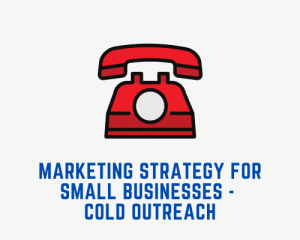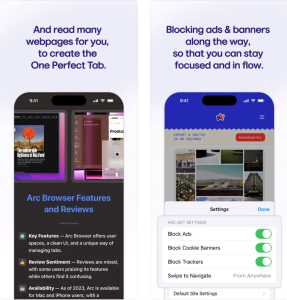Whether you’re deep into a content marketing effort that includes regular blog posts or you’re just getting started, you need a plan to maximize the impact of those posts. Your work isn’t finished when you hit “publish.”
Right Source’s own expert marketing managers — Christine Guenther, Dov Hoffman, and Alex Smolen — tapped into their collective experience to chime in on the question at hand: “What should you do immediately after publishing a blog post to ensure that it has the most impact on new and existing audiences?”
Here’s what they had to say.
Double check to make absolutely sure that…
- The live post is formatted correctly
- There are no wonky spacing problems, typos, or missing words
- Links to relevant blog posts (both your own and others’) are included
- A call to action and/or a way for the reader to contact you ends the post
Then…
Join the conversation
Once a post is live on your website, let the world know it’s there by publishing updates about it on your social media properties with a shortened URL (Bitly, Ow.ly, tinyurl, etc). LinkedIn is arguably the most important for B2B marketing efforts (although certainly dependent upon your audience), so you may want to start there. Make sure you use a great photo. Articles with images get something like 94 percent more views than those without. And schedule some pre-written follow-up social posts to give your blog a little boost in the coming days and weeks.
Don’t focus solely on social media, though. Are there industry blogs, forums, or sites that have the same target audience and/or overlap with your readership? Expand your audience by syndicating your blog post to a carefully selected group of outlets.
Distribute internally…
Ask your colleagues to share the post with their social networks. Send a distribution email with links and suggestions for pre-written content to post to everyone on the team. This makes sharing as easy as possible, which means folks are more likely to actually do it. Even if your company is two dudes and a website, and you also have a blog, there’s one more dude who will be pushing your content out to the world. Finally, make sure sure you have an RSS feed set up with a tool like Feedblitz to ensure that no one misses your wisdom.
Include your colleagues in sales
It’s especially important to distribute new content to the sales team — heck, you may even want to send them their own distribution email of sorts — because they can use the content to address “problems” or frequently asked questions from prospects. While you’re at it, create a spreadsheet that includes the pain point, title, type of content (you’ll want to expand beyond just blog posts), and URL (so they can share it) so the team can easily draw from it to address client or prospect issues or questions. You might even include some canned language that the sales staff can use when they’re sharing. Beyond this, sales should also be sending out your new content to new prospects for nurturing purposes as well as to existing customers to sustain and increase goodwill.
Fire up your friendlies, or the usual suspects
You know those folks who always share, like, comment on, or talk about your posts? Tap them for distribution, too. Let them know: “Hey, I noticed you’ve got lots of contacts who might find this piece of content interesting/helpful/relevant. Please feel free to pass it along!” Your content will be amplified even further.
Note: Though digital channels continue to grow in terms of where people are spending their time/efforts, word of mouth is still worth considering as a distribution channel. When relevant, work your recently published blog post into customer conversations.
Consider your options for repurposing
Ok, so maybe this isn’t something you should be doing immediately after your publish — in fact, this is something you should start considering when you begin developing an editorial calendar, which should include topics for all the various types of content you create. You should think about how a given post could be repurposed as other types of content. Could it become a checklist? Could it be compiled with other posts to make a category-based eBook? Could you use some of the content to create an infographic or could it become the source idea for a white paper?
Even if the post won’t work for one of the aforementioned content types, it can and should be featured in your next newsletter or other email communication you send to customers.
Update existing prospecting material
That blog post you wrote was awesome, right? Then make sure you replace any older or outdated material being linked to in drip programs, etc., with the newbie. Keeps everything fresh and relevant.
Track, measure, report, and glean lessons
First of all — and the importance of this step can’t be overstated — track your post by attaching a shortened, trackable URL to it. Using short links via bit.ly or marketing automation platforms can help you see how well your post is performing overall and on different distribution channels.
If you’re not diving into your analytics and viewing the data on your published blog post, you’re not doing yourself (or your content) any favors. That’s because you’re completely missing the opportunity to learn what resonates with your audience and what doesn’t. There’s a lot of information to be gathered from viewing this information, including how people are getting to your content, which can tell you what channels are working to drive traffic (and which ones you can abandon).
Use the data you monitor to gauge how well your overall content efforts are performing on a weekly, monthly, yearly, and year-over-year basis to identify any trends that can then influence your future content marketing strategy and editorial planning.
If it sounds like a lot, start by nailing the first two or three suggestions, then move ahead from there. In any event, the point here is to make sure your blog post gets the eyeballs it deserves. Want a list of quick distribution tips? Try our checklist, “Content Distribution in Eight Easy Steps.”
Digital & Social Articles on Business 2 Community(54)
Report Post






